Top 4 Weeds in Missoula and the Best Tool for the Job
Weeding can be daunting, especially this time of year when the weeds easily outnumber the vegetable seedlings, and weeds are not just unsightly. They actually steal water, nutrients, and space from the crops we want to grow. This results in smaller plants, stressed or stunted plants, and reduced yields. That’s why it’s so important to weed your garden.
Weeding helps your crops grow big and strong, which means a bigger and better harvest.
Garden City Harvest practices organic or sustainable growing, meaning we don’t use any herbicides. Organic weed management usually means manual weeding by hand or with a tool. The trick to organic weed management, like with most organic practices, is early and frequent intervention. This keeps the weeds small and makes for less work down the road.
In this blog, we’ve listed four of the most common weeds found in our farms and gardens in Missoula, and which tool is best for the job following organic growing practices.
Weeding Tools
First, let’s go over our favorite, go-to weeding tools which we will reference throughout this blog. Pictured below from left to right: Hori Hori, hand trowel, dandelion weeder, and hula hoe, aka stirrup hoe, aka hoop hoe (photo right). The Hori Hori is a Japanese gardening trowel and knife all in one, and one of my personal favorite tools for planting and weeding.
field Bindweed
Bindweed is seemingly everywhere in Missoula. This perennial, rhizomatous vine grows rapidly, easily covering surrounding structures and vegetation, wrapping (or binding) other plants with its tenacious vines. Rhizomatous means it has horizontal, underground stems that sends out roots and shoots, allowing it to spread underground. Rumor has it that the roots can reach depths of 20 feet! I’ve even found it growing in the dark crawl space of my basement, somehow sneaking in around the concrete foundation from the garden outside.
In short, it is not an easy plant to eradicate! So do your best to catch it while it’s small, and NEVER let it flower or go to seed.
The best tool to pull bindweed is a hand trowel or Hori Hori. Dig deep down into the soil at the base of the bindweed to remove as much root as possible. Toss this villainous weed, roots and all, into a trash can or compost industrially (e.g. with Garden City Compost). Don’t put it in your home compost pile or leave on the soil for it will surely start to spread again! As Ross Gay describes in his essay “Bindweed…Delight?” from The Book of Delights: “lore has it, [it] will re-root and strangle your children as they sleep.” Finally, if your garden has bindweed, we recommend against rototilling your garden because each shred of root could result in a new plant.
Tips for identifying:
White or light pink funnel-shaped flowers. This plant is related to the annual Morning Glory, so the flowers look similar but smaller.
Alternate, kidney shaped or round leaf shape
Cluster of vining leaves growing along the ground
Fleshy long white roots
Read more about bindweed and Beyoncé in this blog (click here).
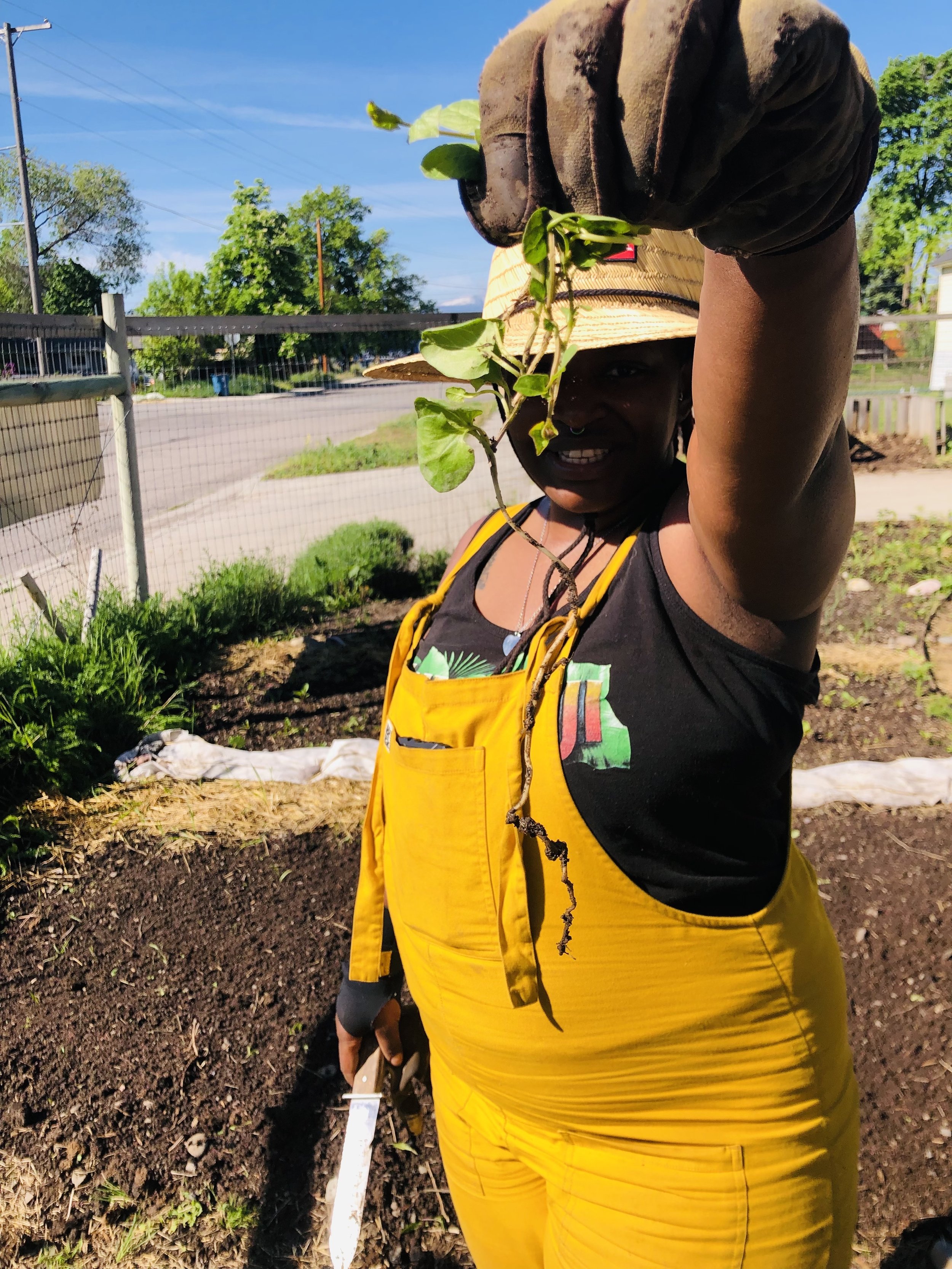
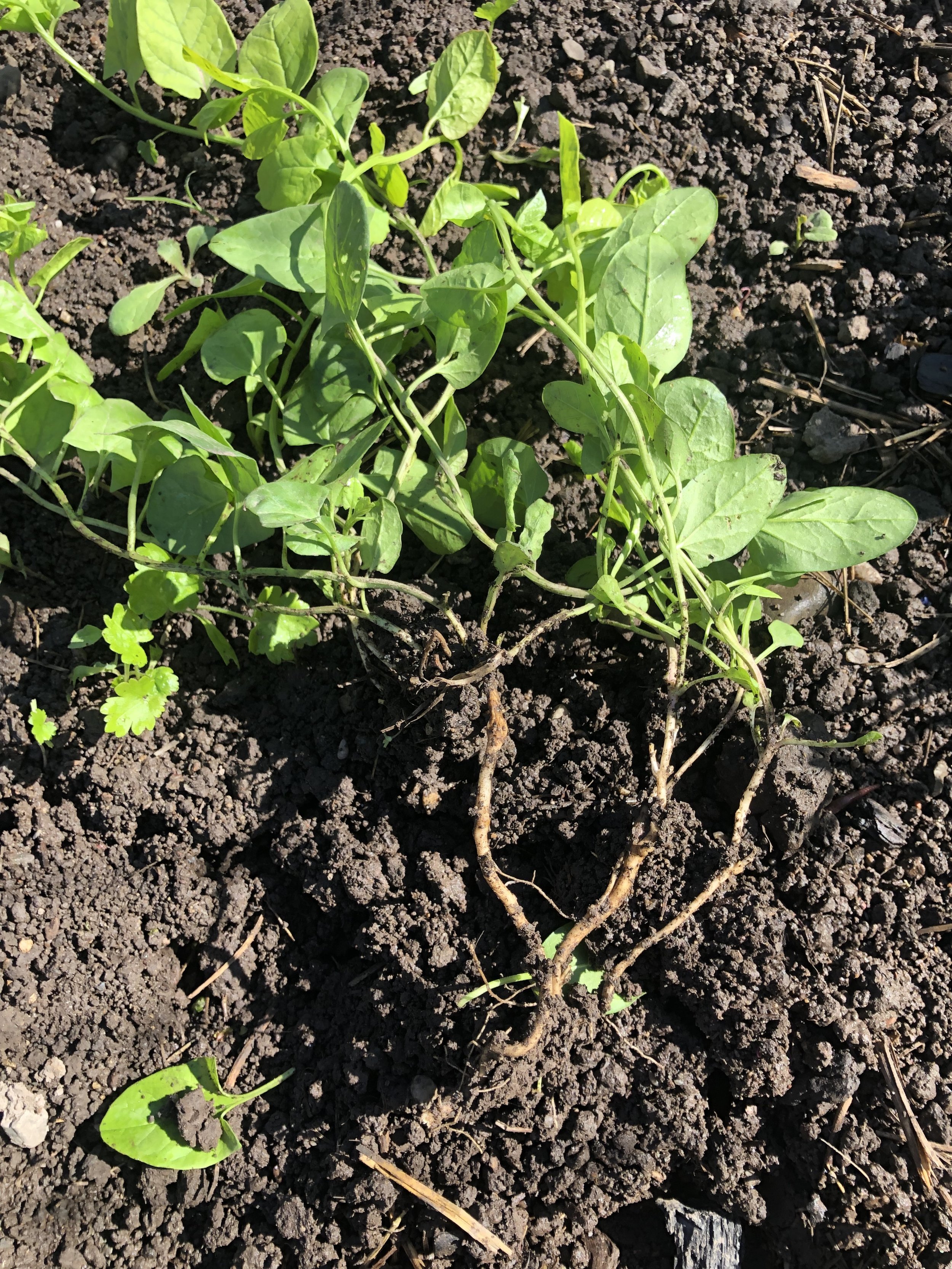
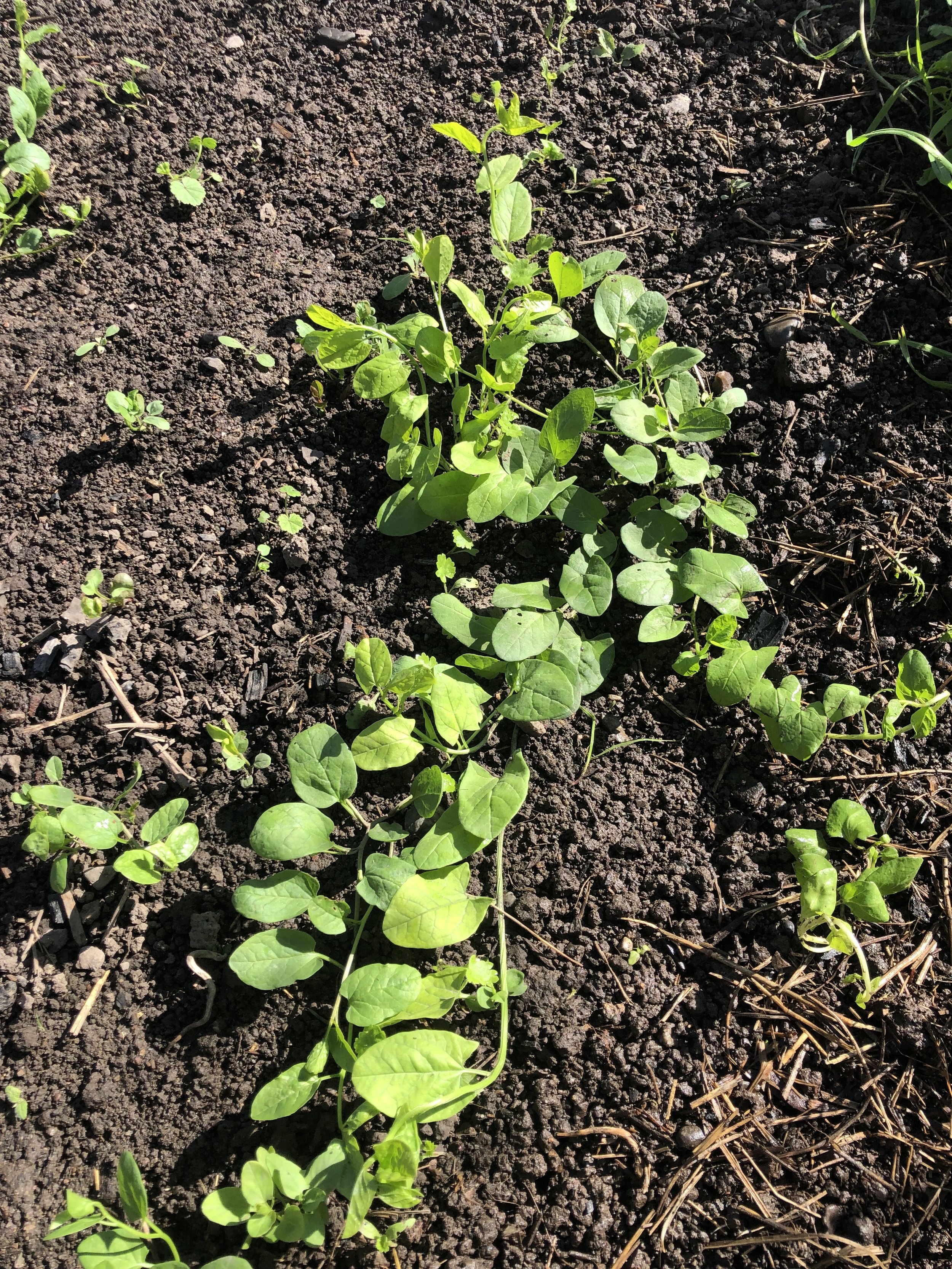
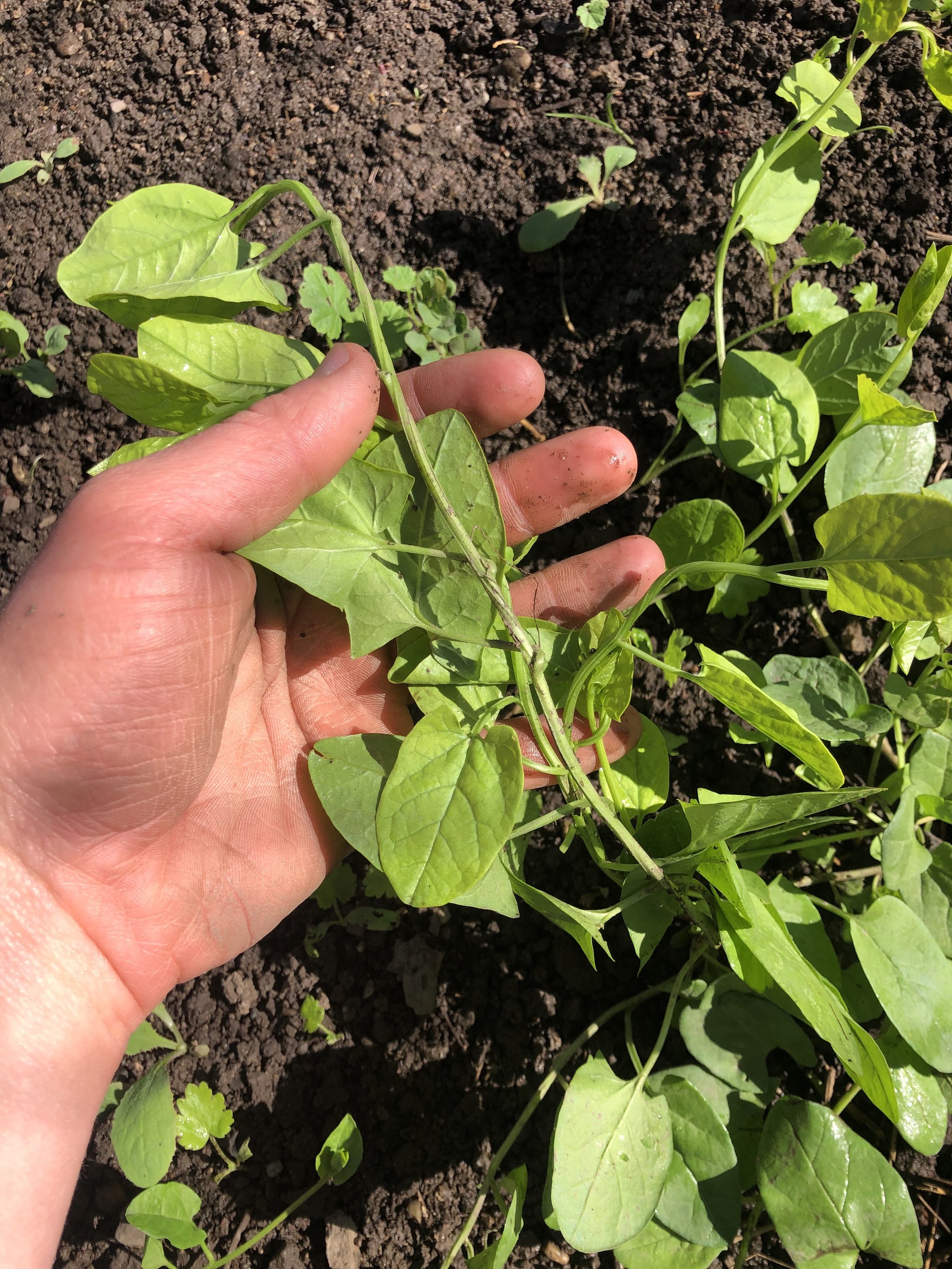
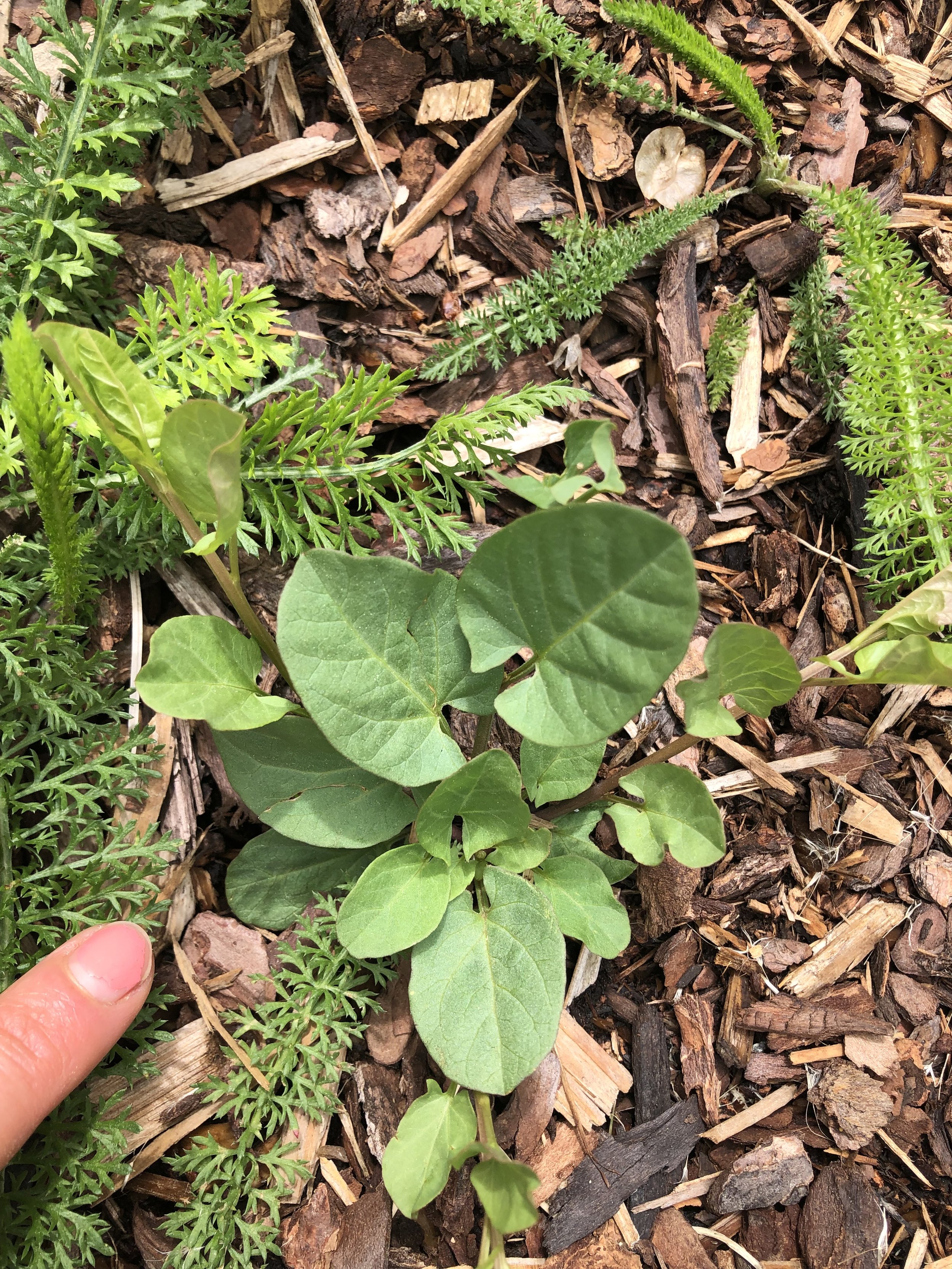
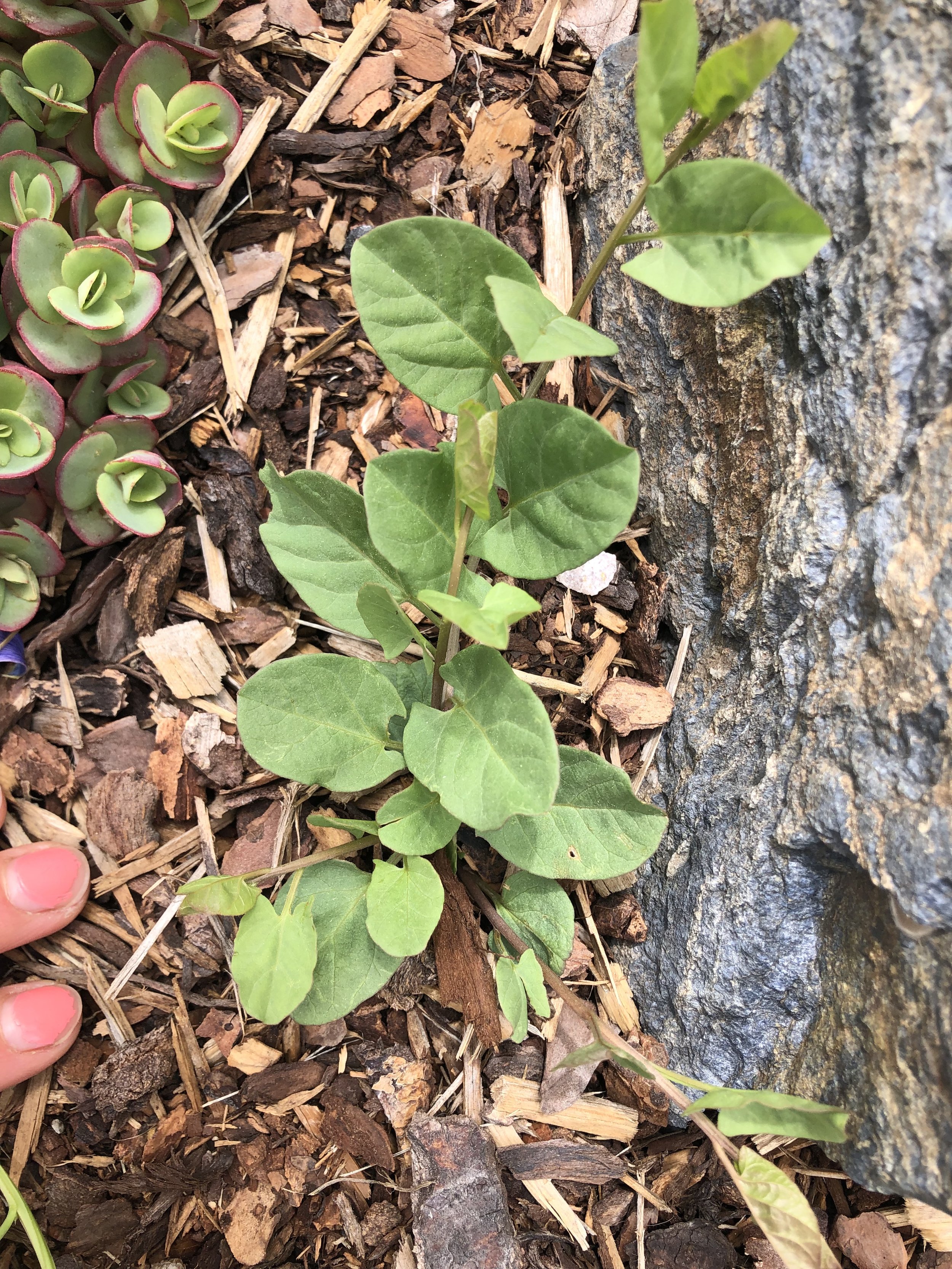

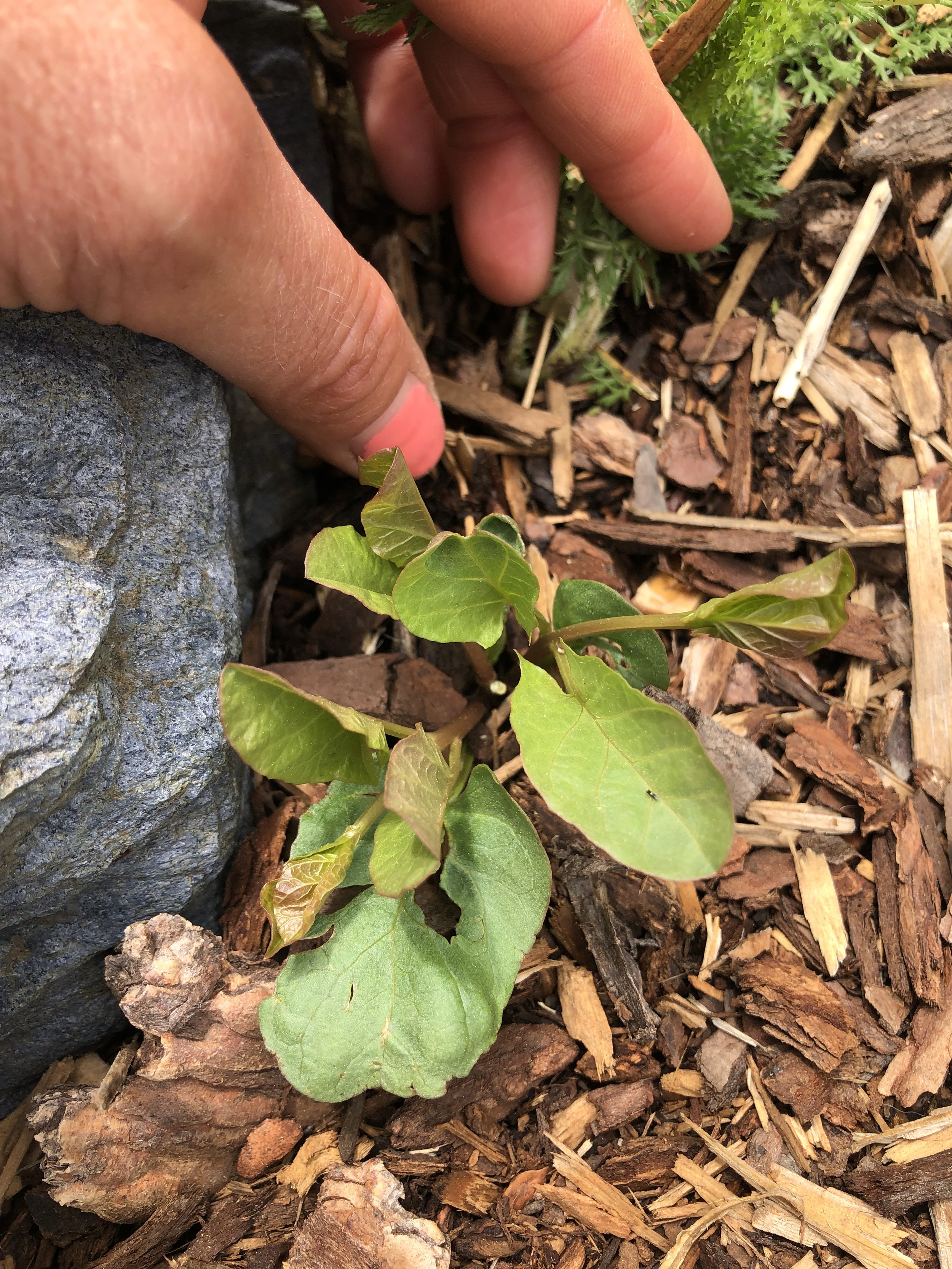
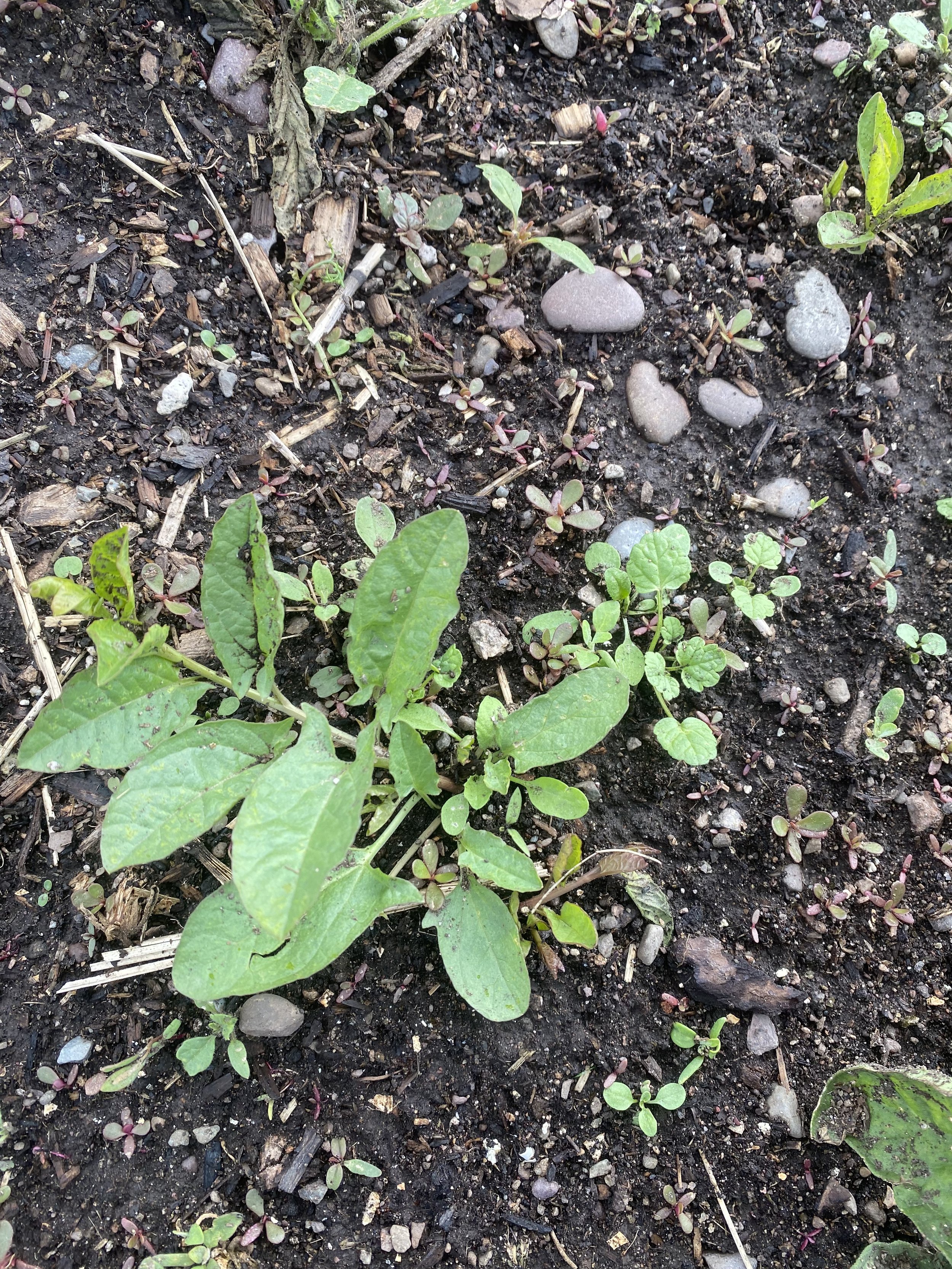
2. QuackGrass
Quackgrass is another perennial weed, ubiquitous to Missoula and difficult to eradicate because of its rhizomatous nature.
The best tool to remove quackgrass is the digging fork, which easily pulls the long, wiry roots from the soil. As is the case for many of our worst weeds, just a small bit of root can regrow into a new plant, so it is critical to remove as much of the root as possible! Fortunately, if you leave quackgrasss out to dry in the sun on the surface of your soil, it’s safe to add to your home compost pile…just make sure it’s dead and dry or the rhizomes will regrow!
Tips to identifying:
Tall, singular blades of grass (not a bunch grass)
Bright green, slightly hairy grass with long leaves
Thick fleshy white roots - usually long. This weed can travel far through its roots
Read more about quackgrass in this blog (click here).
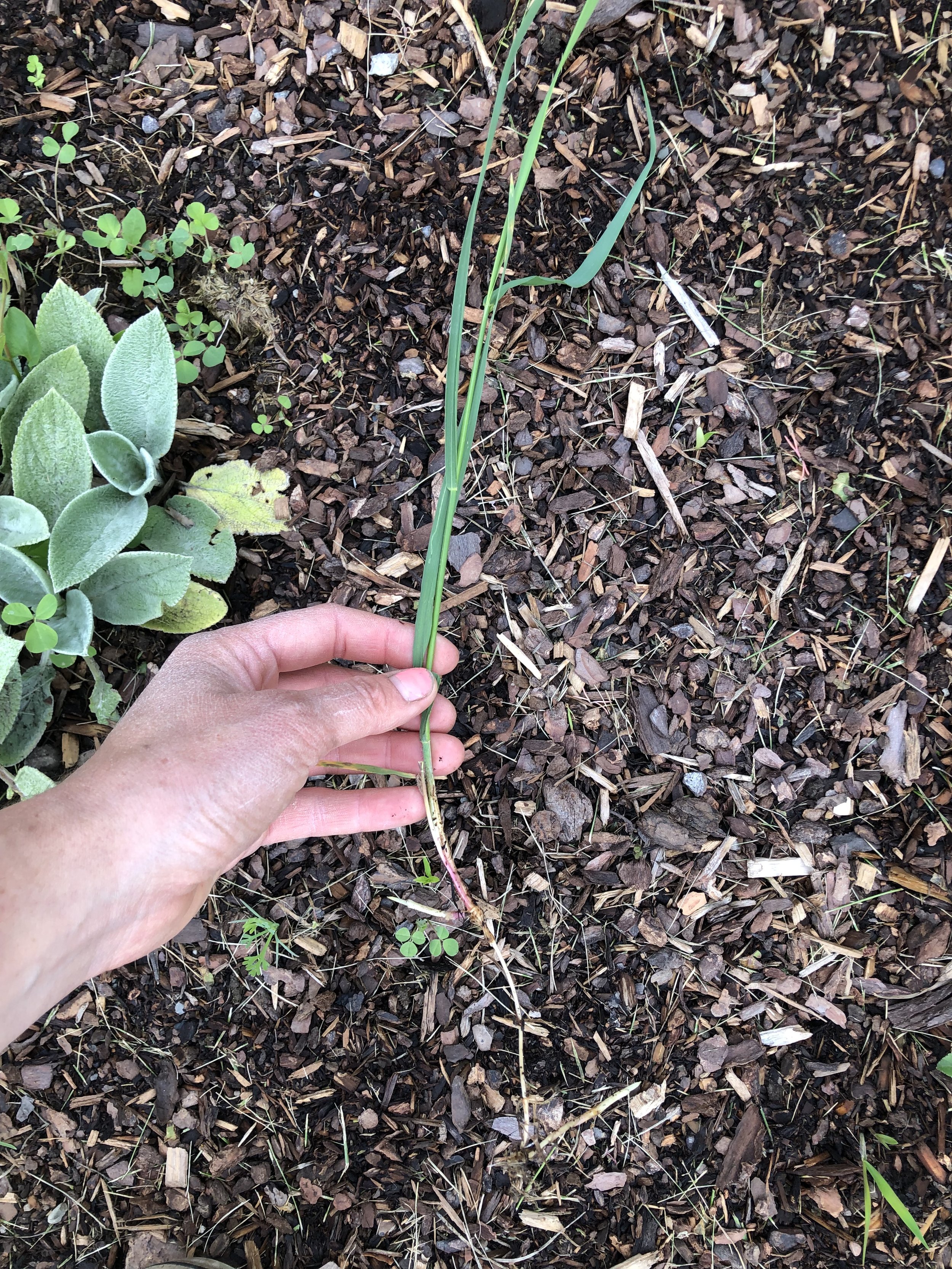
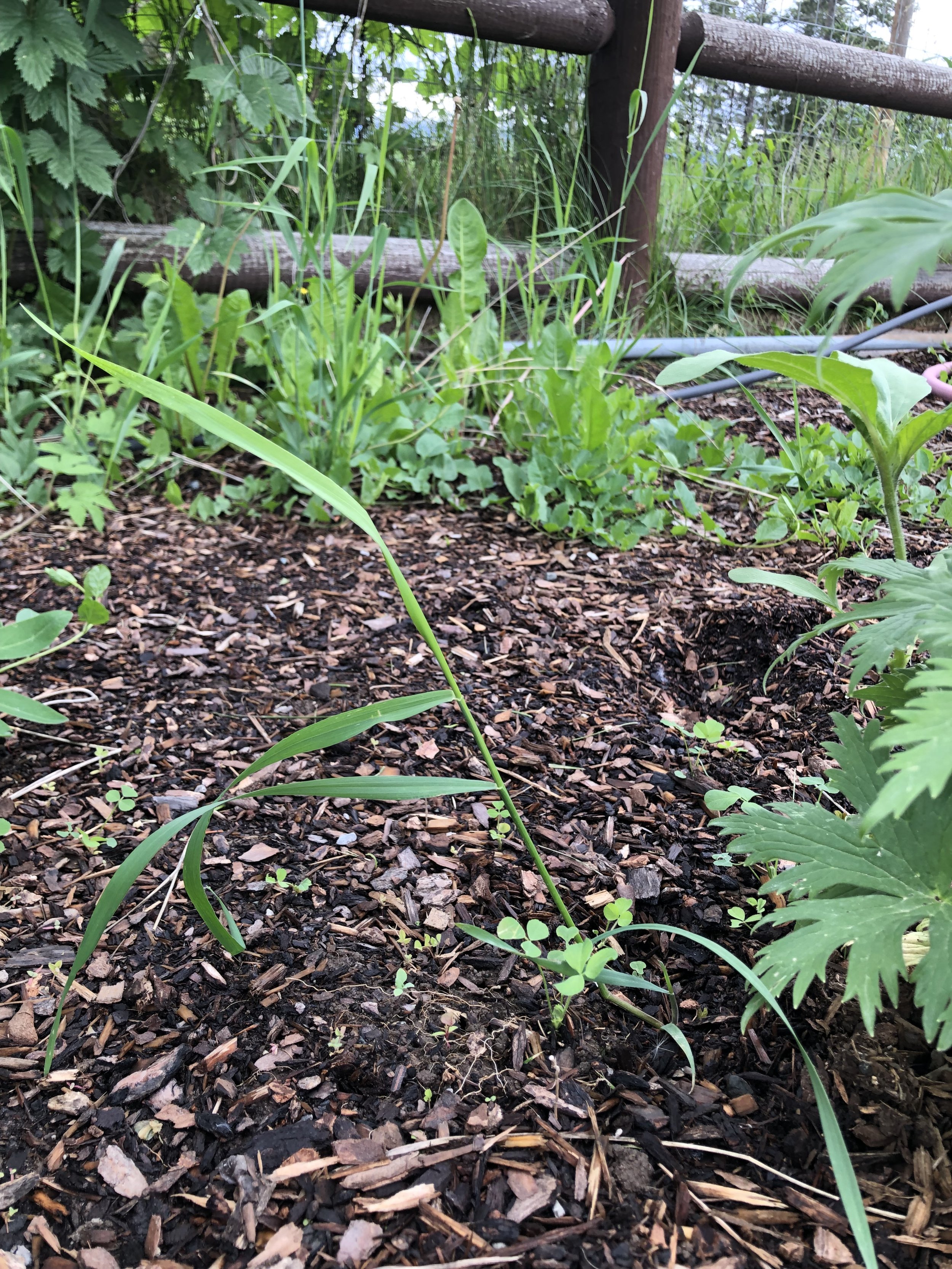
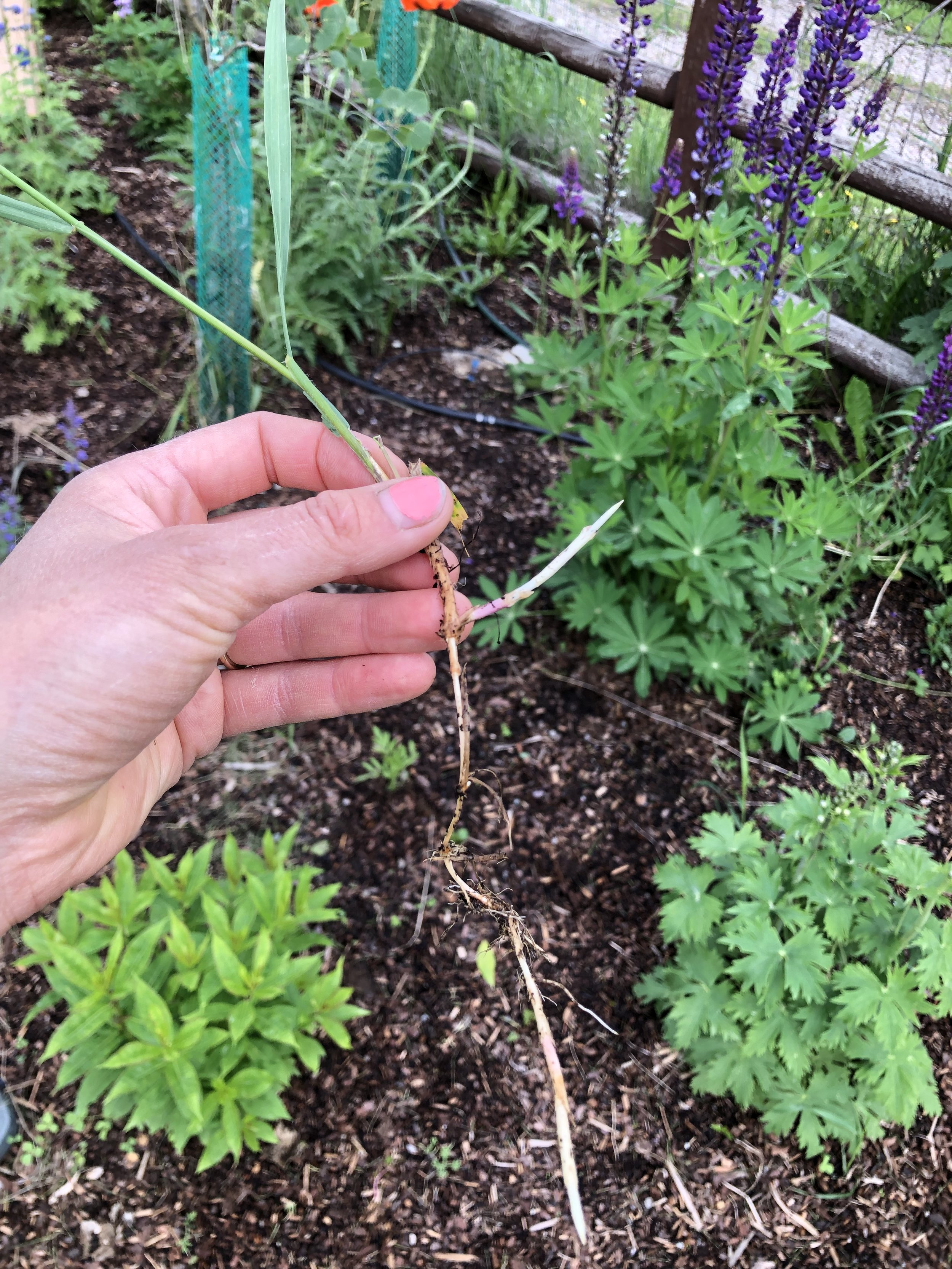

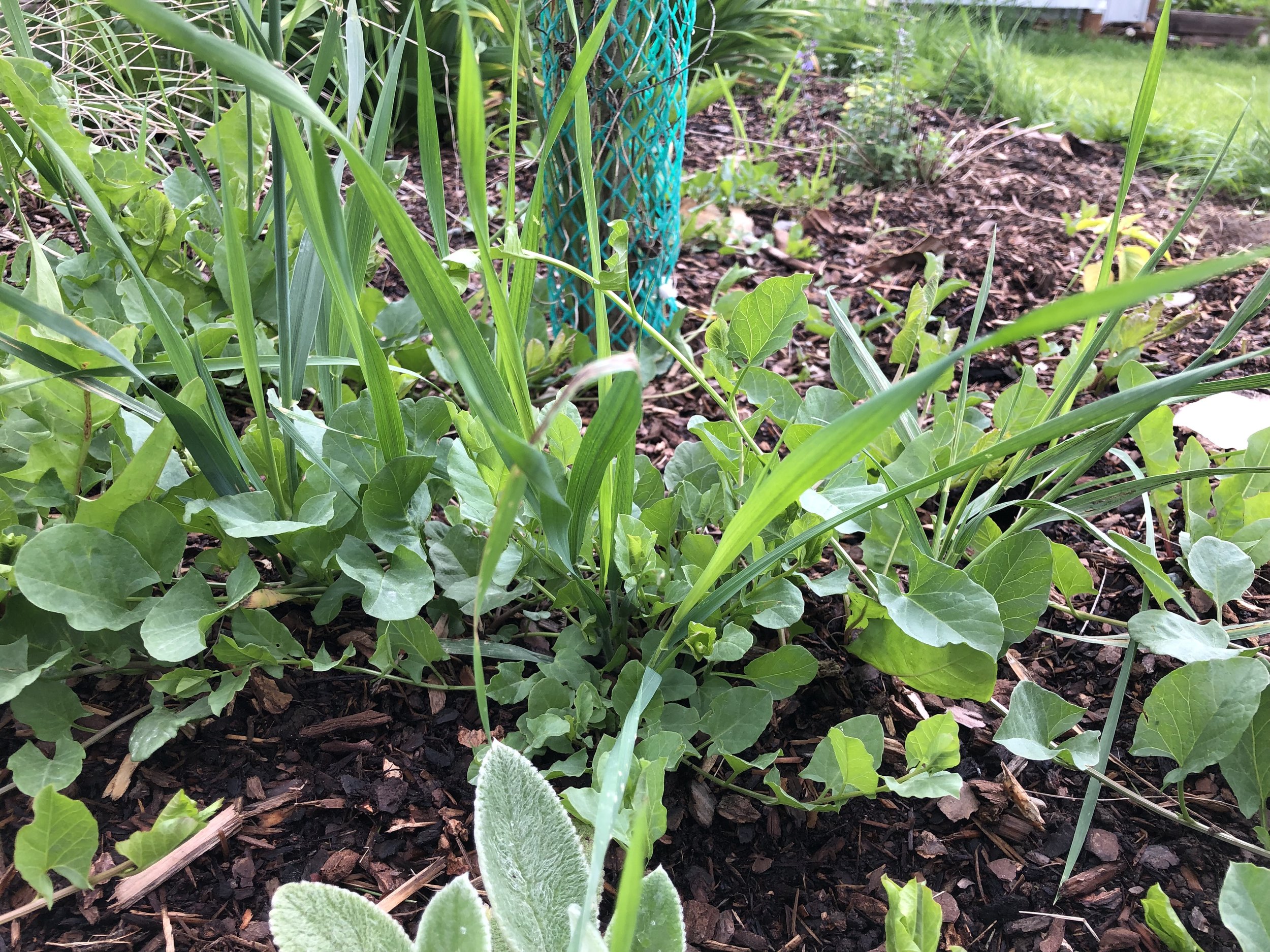
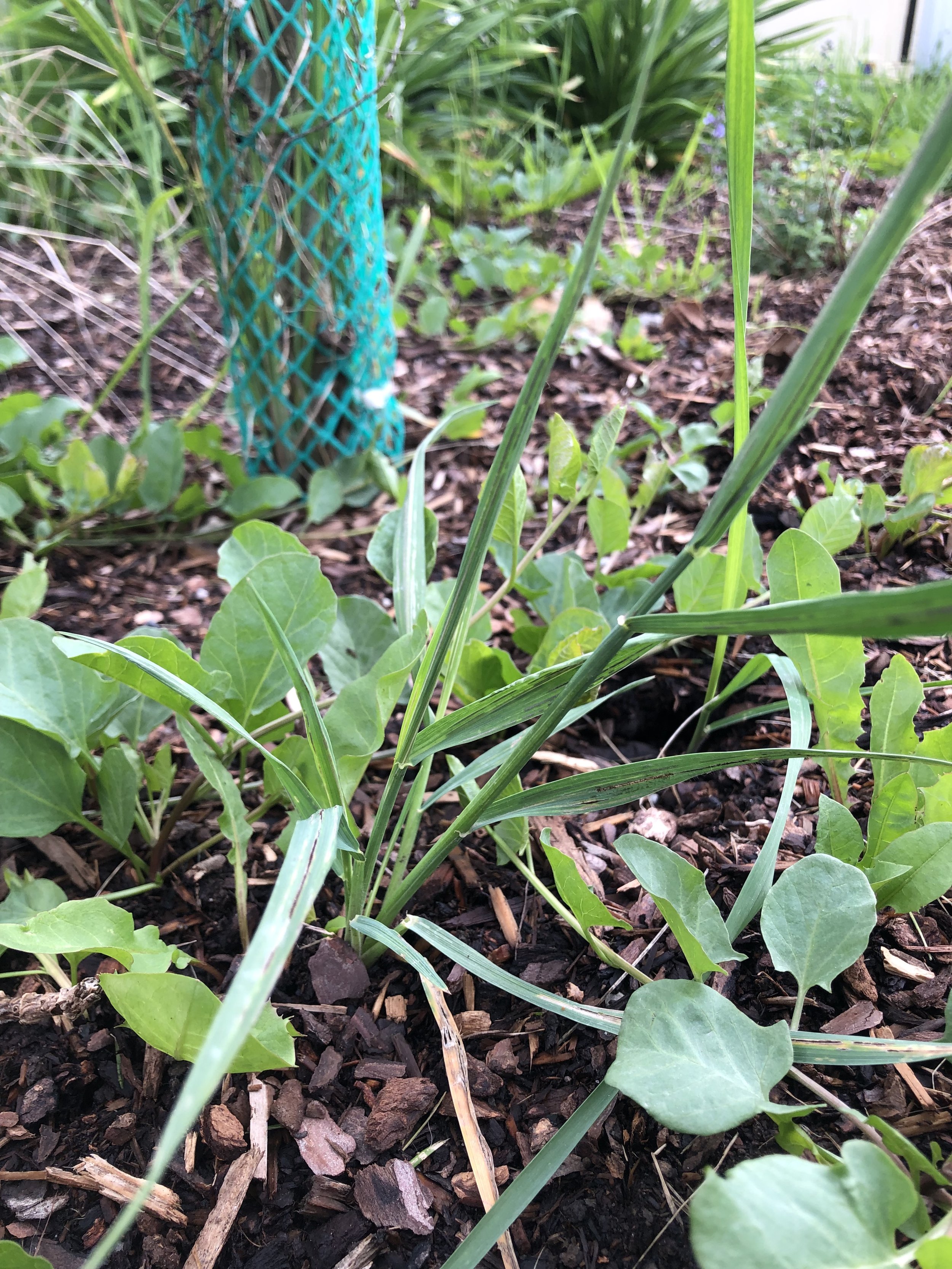
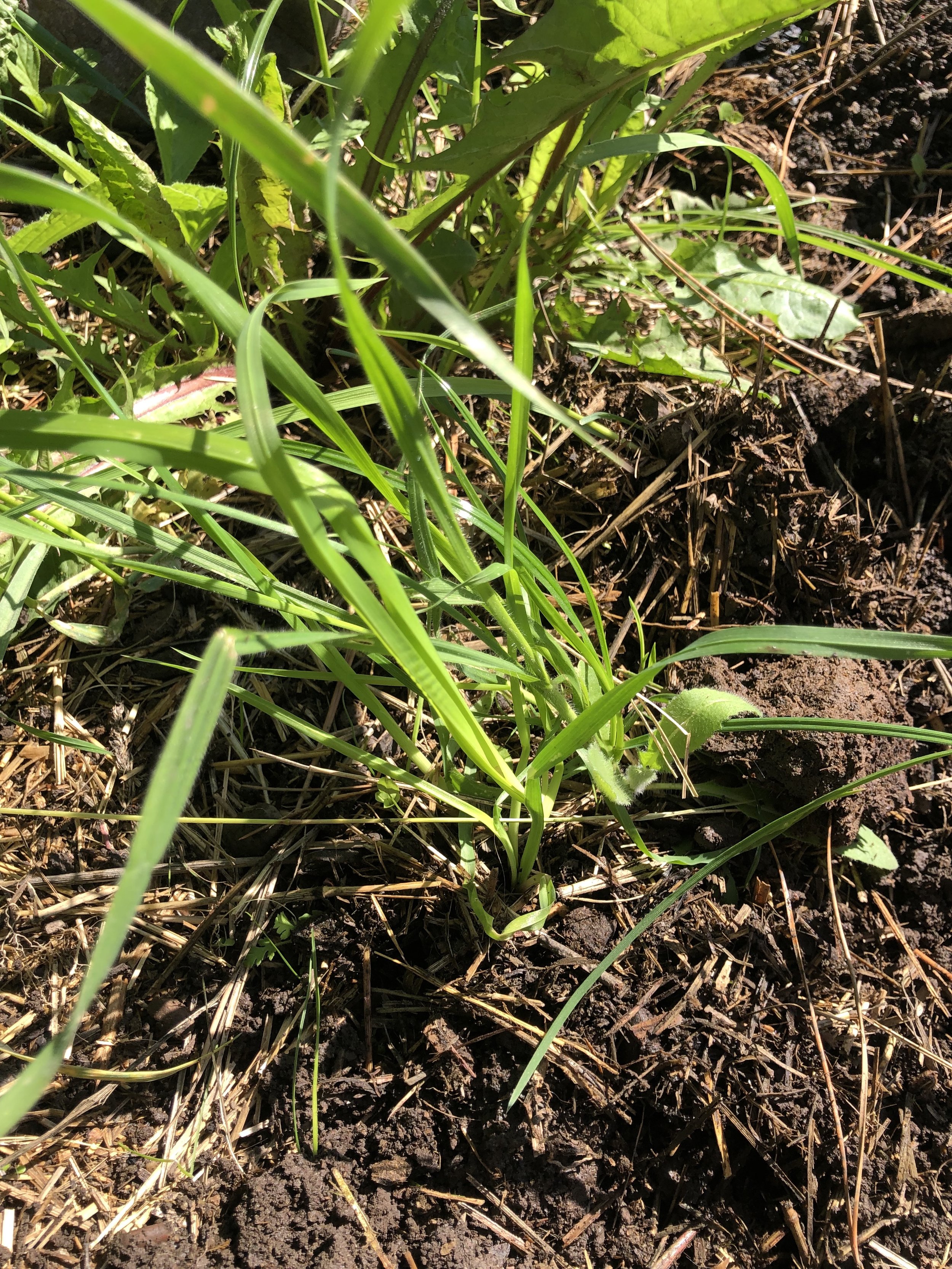
3. Purslane
Purslane is common in all of our gardens and farms. The small succulent leaves and stems will quickly cover the bare soil - so much so that some mistake it for a ground cover. Interestingly, purslane is also one of the edible weeds. It’s a pest that has a way of sneaking between rows of beets and carrots and intermingling with the young seedlings, making it challenging to weed. It also loves the heat, so don’t expect it to go away as spring turns to summer!
The best tool to weed purslane is the hula hoe, which uproots this shallow rooted, low growing weed. Purslane stems and leaves will easily reroot, so we recommend raking the purslane out of your walkways and garden bed after a good hula hoe session. As with many weeds, regular hula hoeing when the weed is small will make for less work down the road.
Purslane is safe to add you your home compost pile without being dead and dry beforehand.
Tips for identifying:
Seedlings appear as a carpet of tiny red leaves
Mature plant has thick, fleshy red stems and small green or red oval-shaped leaves
Very low growing, will eventually spread into a mat across the ground
Looks like a succulent that you might grow in a pot in your house
Read more about purslane in this blog (click here).
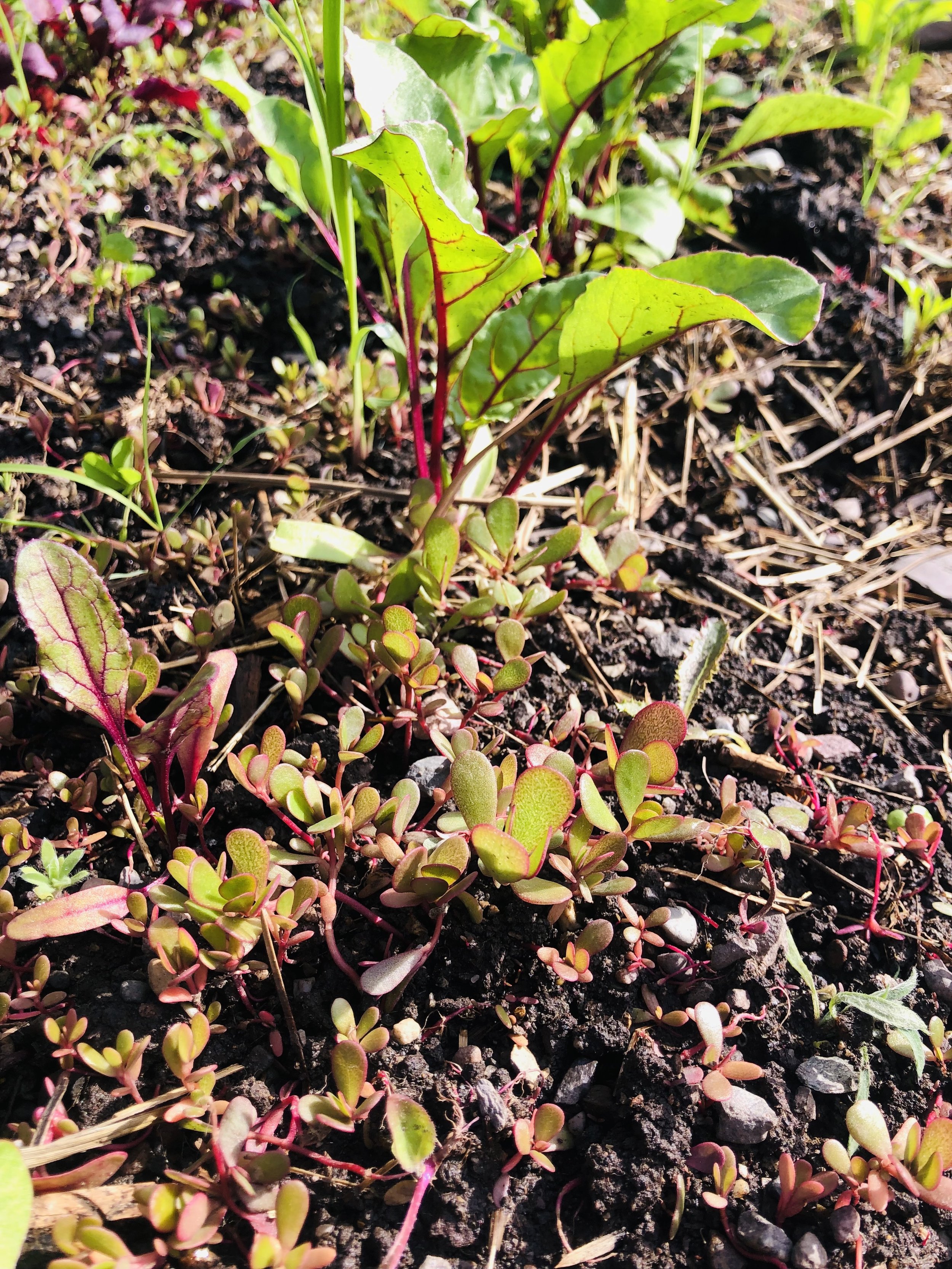
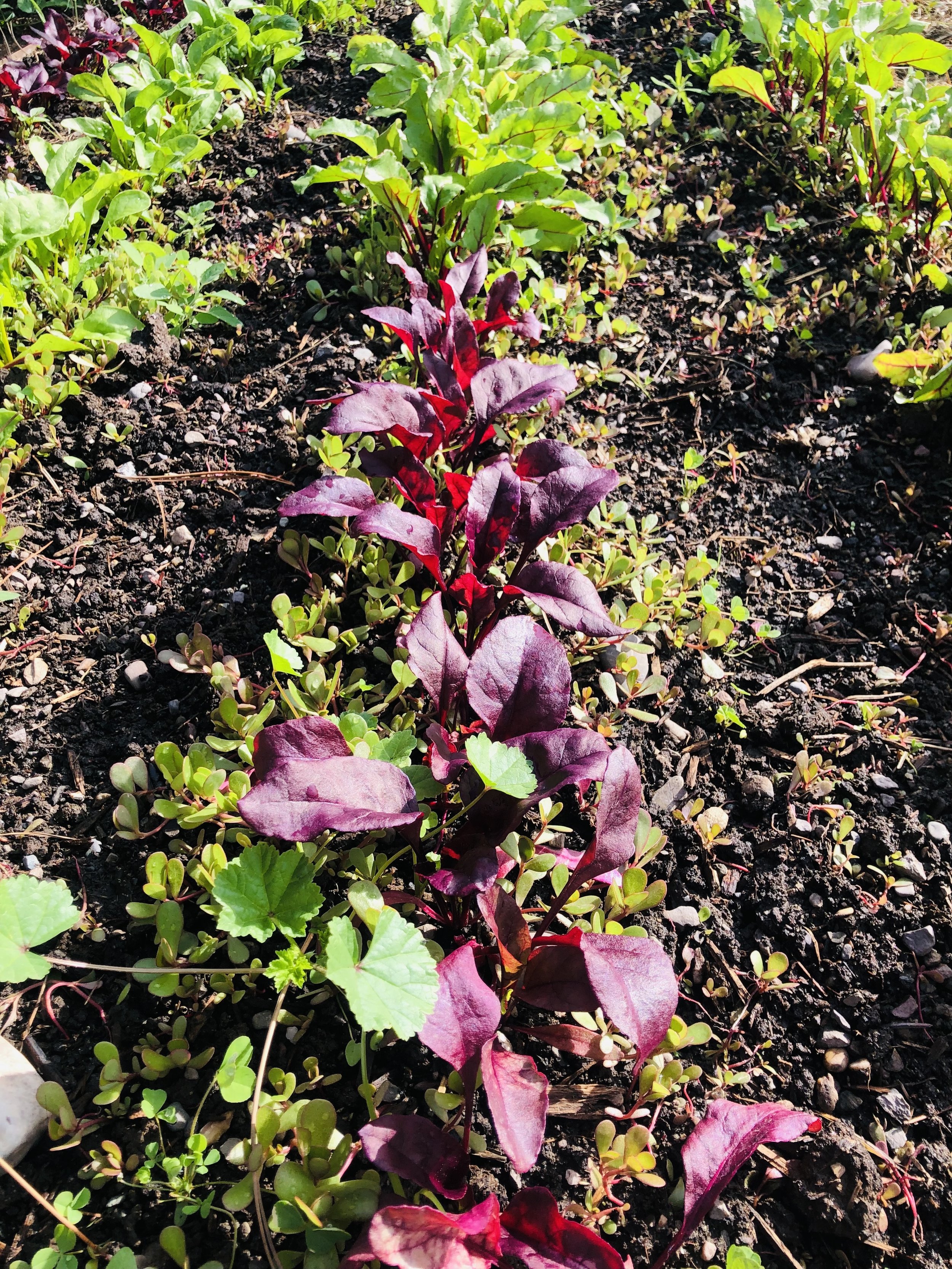
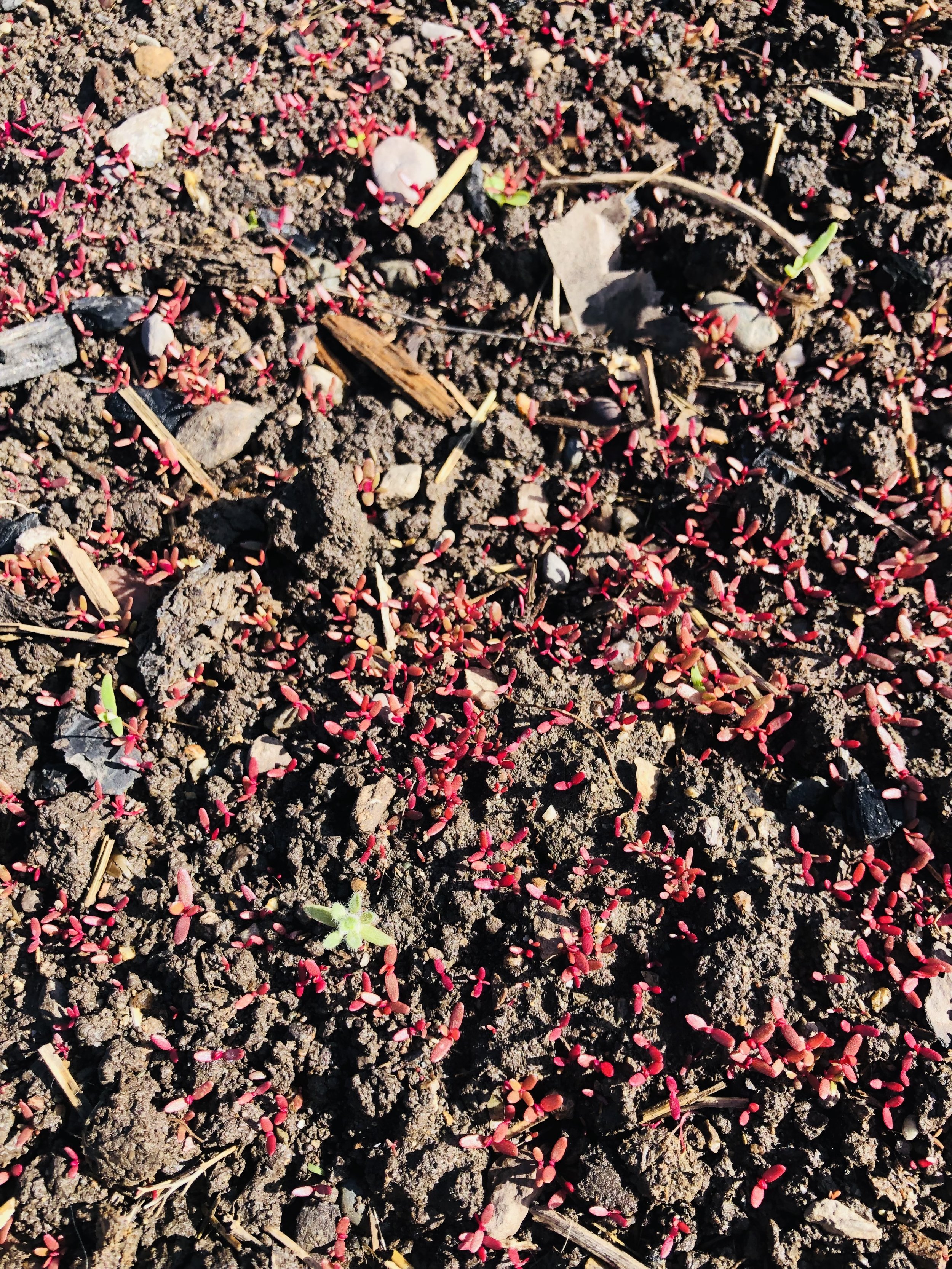

4. Shaggy Soldier
Shaggy Soldier, or Hairy Galinsoga, is a relatively new weed to our farms and gardens and a serious pest. “Shaggy,” as Orchard Gardens farmers call it, starts out small and low growing, but will explode in the heat, becoming large and leggy. It has hairy leaves and stems with a flower resembling a tiny white daisy. As with most weeds, it is important to catch it before it flowers, and certainly before it “seeds out” or the flowers give way to mature, ready to sprout seeds. If you don’t, thousands of seeds will follow and spread by wind or by sticking to animals, pant legs and machinery. Worse, any part of the stem will reroot itself and continue growing if left on the ground, which is why our River Road farmers call it the “zombie weed.”
Fortunately, shaggy soldier is easy to pull by hand due to its shallow roots. It is a sneaky one, often found thriving in the understory of row crops. And it’s another weed that should be fully removed from your garden once pulled to prevent rerooting. We recommend tossing it in the trash or composting it industrially to prevent it from spreading through your compost pile.
Tips for identifying:
Fuzzy, deeply veined leaves (similar to a potato leaf) with an opposite arrangement along the stem.
Fuzzy multi-branching, erect stems with white hairs
Multiple tiny white and yellow, daisy-like flowers.
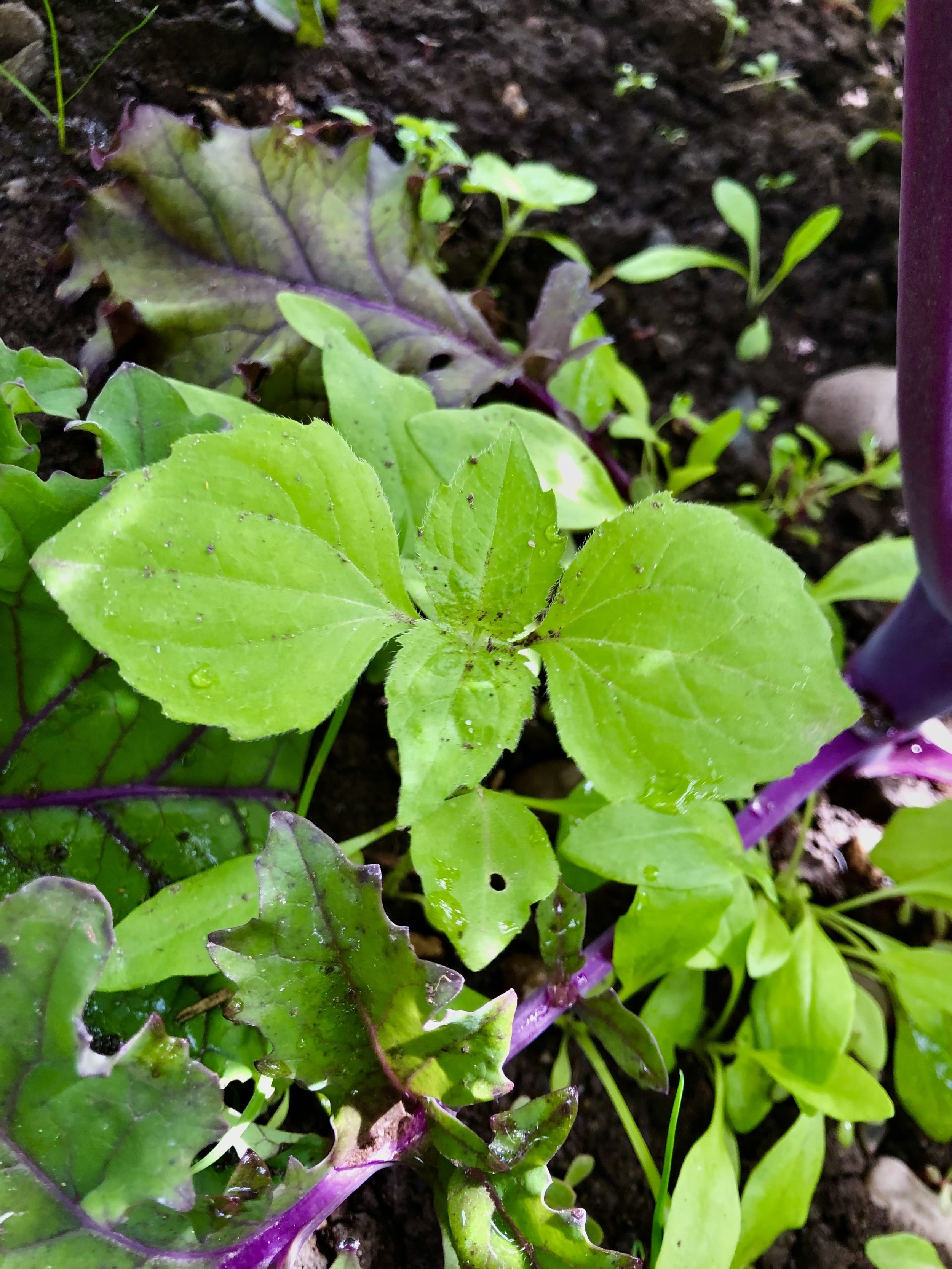
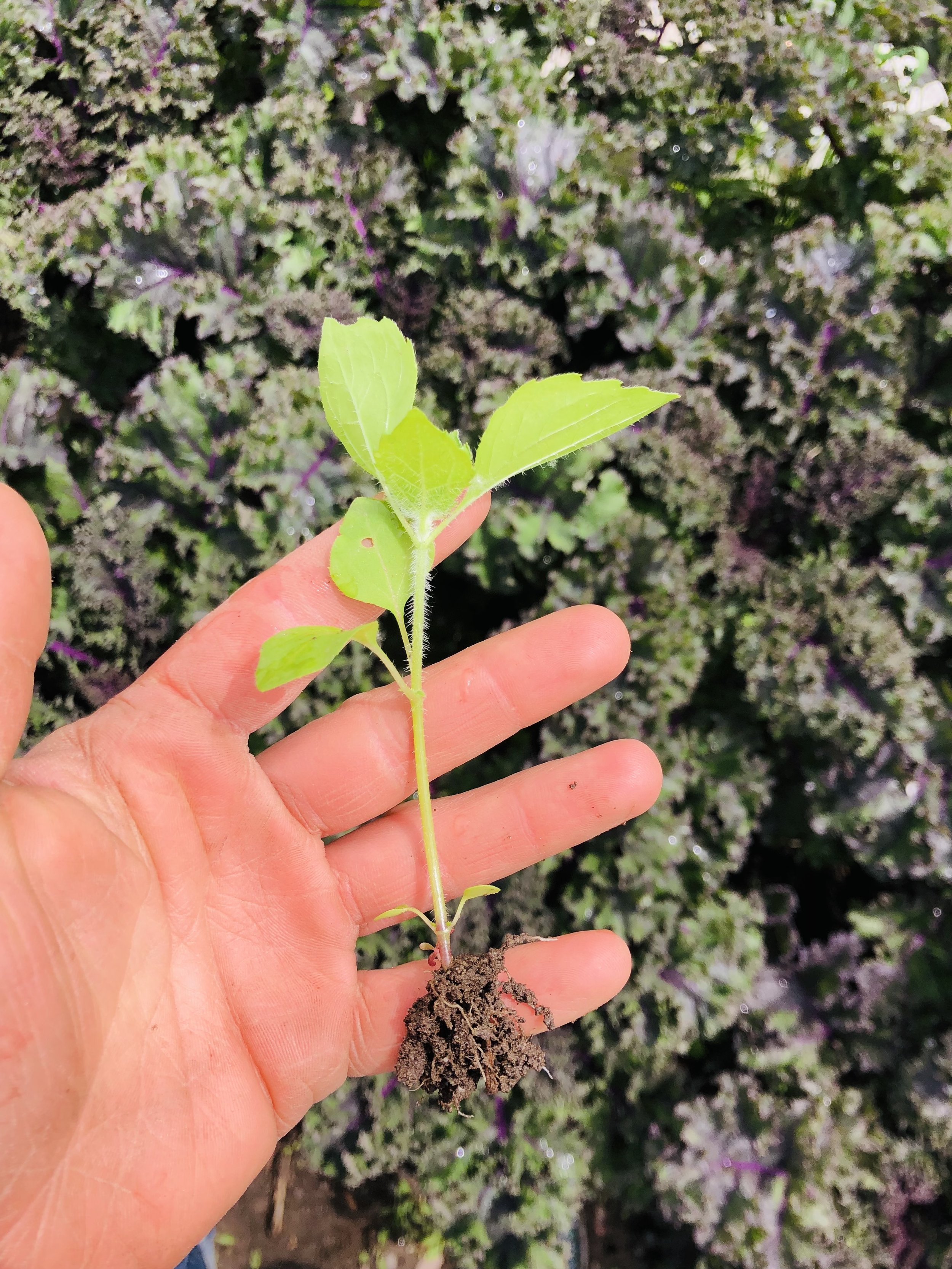
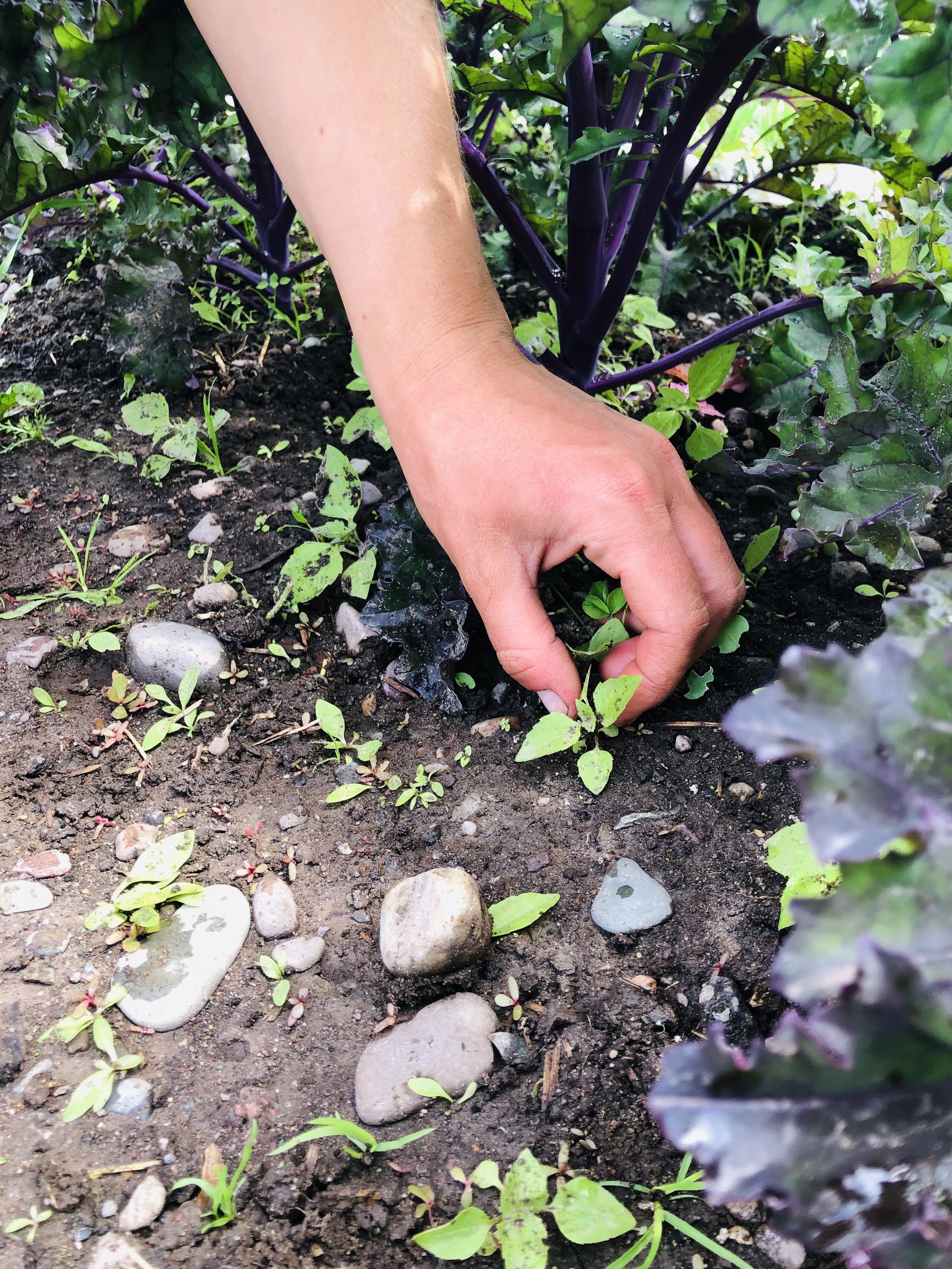
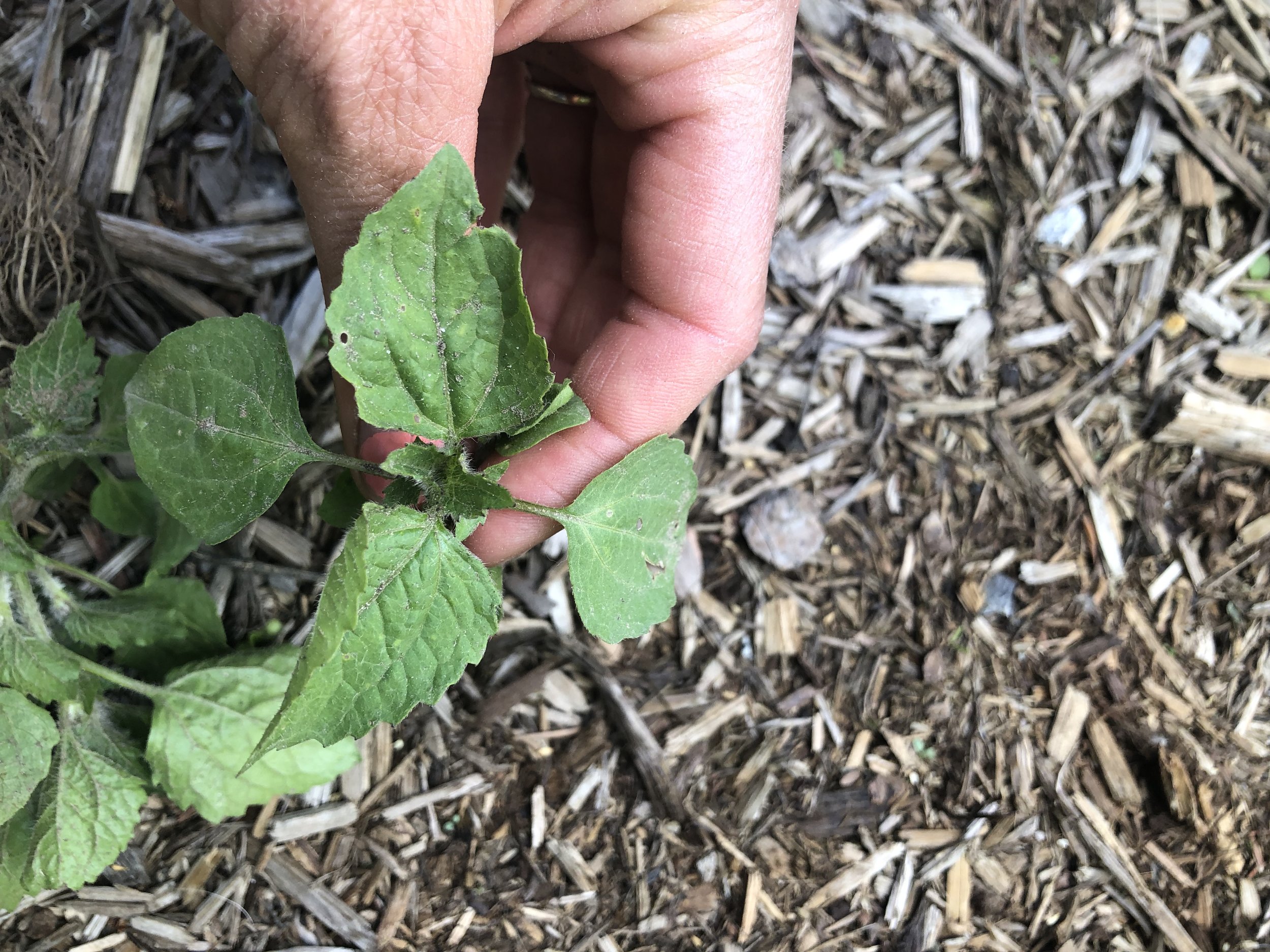
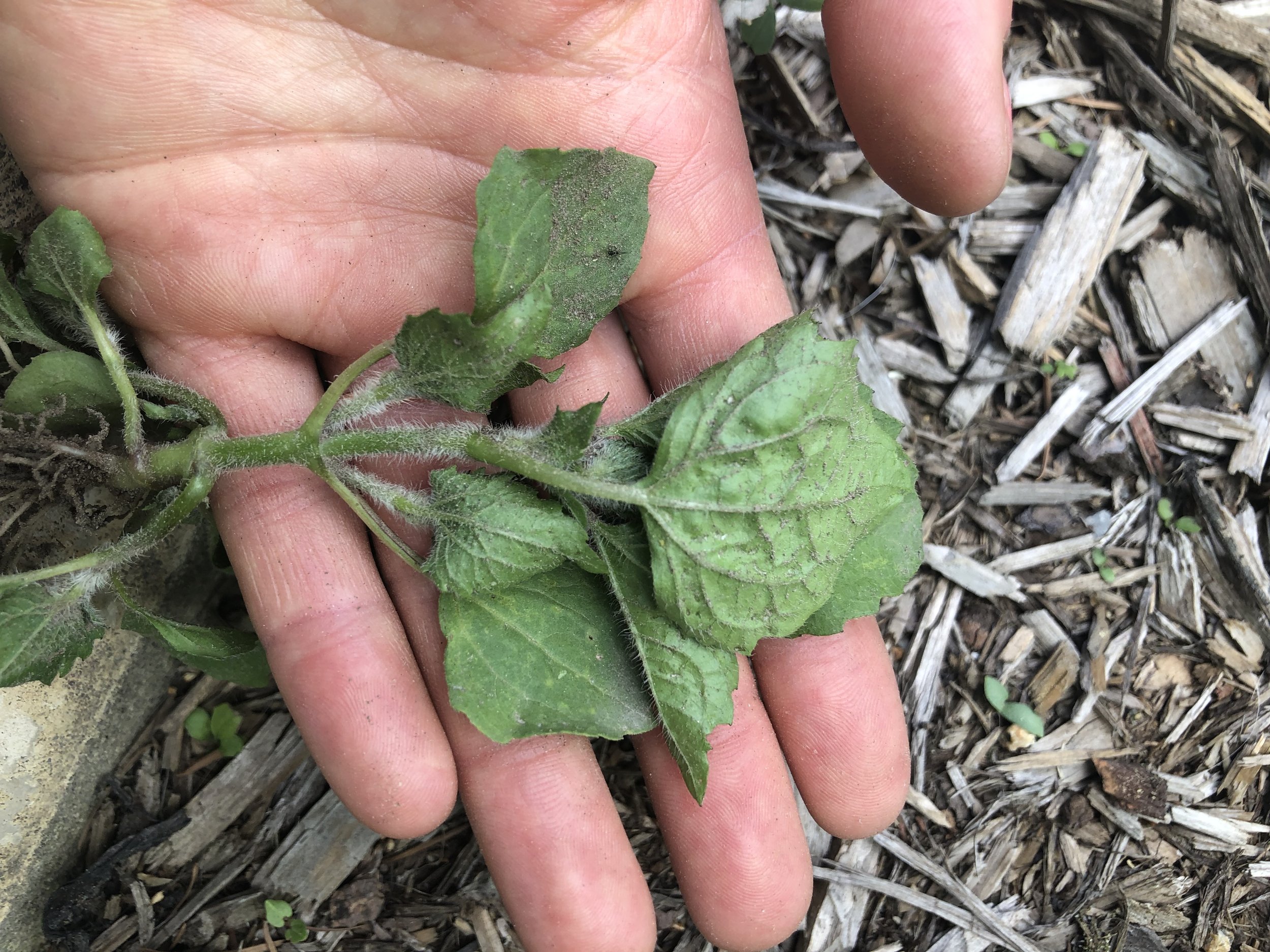
Sources: University Extension, Montana State. “Weed Seedling Identification Guide for Montana and Northern Great Plains.” 2013.
Gay, Ross. The Book of Delights. 2019
Grant, Bonnie L. “Hairy Galinsoga Control: Tips for Controlling Shaggy Soldier Weeds.” Gardening Know How, 20, June 2022, https://www.gardeningknowhow.com/plant-problems/weeds/control-shaggy-soldier-weeds.


